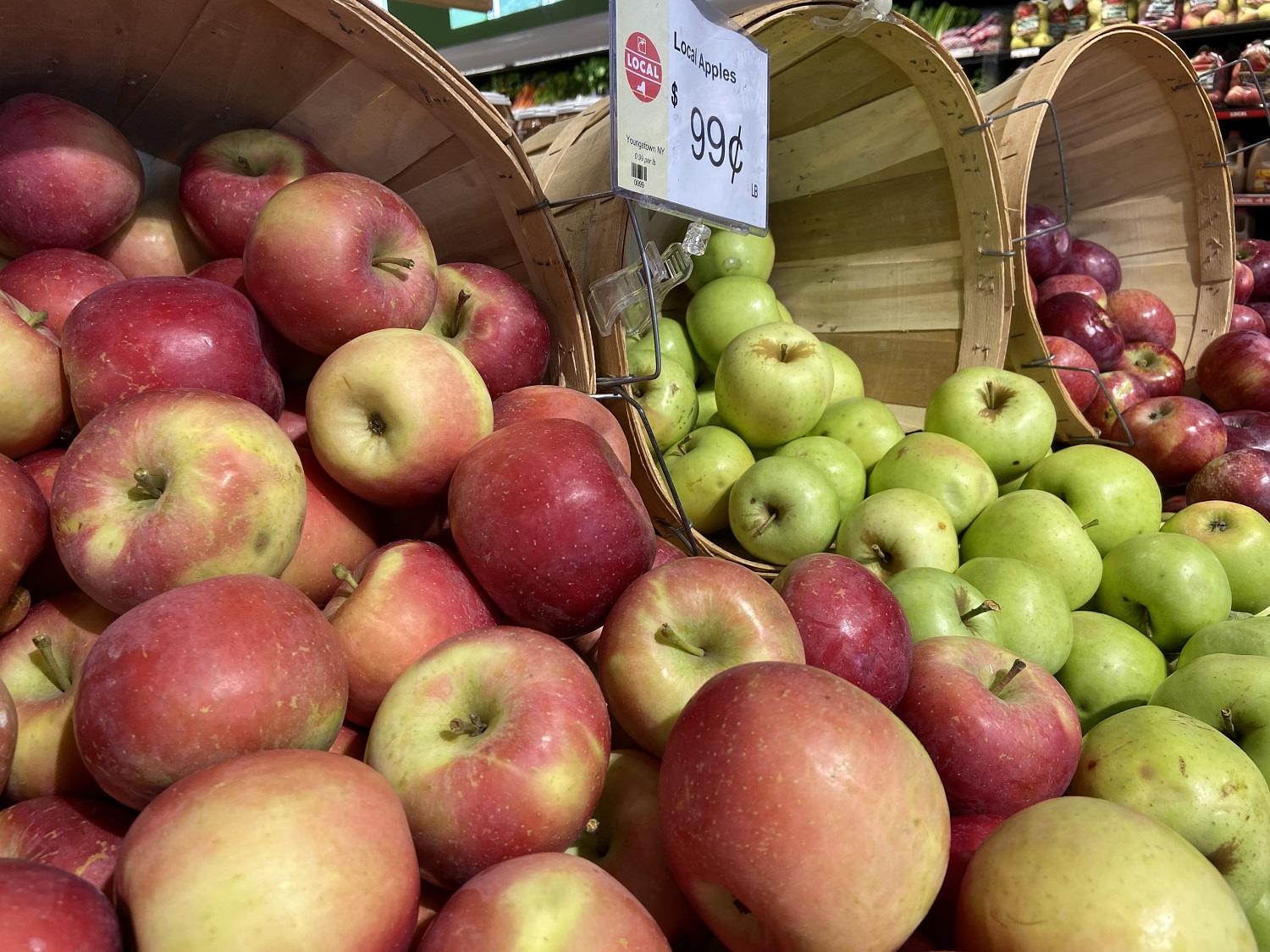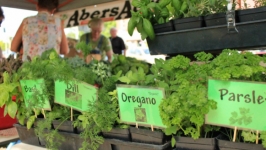What Local Grocers Wish You Knew
The third in a three-part series, What They Wish You Knew, meant to provide insight into the local food industry.
Even though they aren’t grown locally, it’s common to find avocados and other tropical produce in local stores year-round, and while demand for avocado toast, tacos and other dishes has put this far-off fruit on local shelves, Western New York consumers also want access to farm-fresh local products.
When you consider that our outdoor growing season only lasts part of the year, it’s easy to see how challenging it is for local grocers to meet the demand for local products. Supermarket chains like Tops Friendly Markets have massive buying power. However, given the WNY growing season, they can only put out a limited selection of local product, according to Jeff Cady, corporate produce director for Tops.
“We really strive to buy from local farms,” he says. “One, that’s what the consumer is demanding. And two, it’s good business because these farmers shop in our stores. These are our neighbors.
“The biggest problem is our climate, really,” he adds. “We only have so much of a growing season.”
Even during the growing season, it isn’t as simple as throwing the doors open so local farmers can stock store shelves with their wares. Typically, a farm must receive its Good Agricultural Practices (GAP) certification from the USDA before the larger grocers will accept its products. Farms looking to get certification must have a food safety plan in place that outlines their safety practices. After the plan has been drawn up, a third-party audit is used to certify that the farm and its plan follow federal guidelines.
But on top of expectations from the federal government, there are also expectations from consumers: We demand that our fruits and vegetables look good. Cady says just because a farm is certified, it doesn’t mean Tops will automatically start filling shelves with whatever it sends in.
“It really comes down to meeting our specifications,” he says. “There’s an old saying that goes, ‘Farmers don’t have ugly children,’ with children meaning their crops. Sometimes, things that come through our doors the farmer might think are beautiful, but it doesn’t look like what our customer is accustomed to seeing. Not that the product isn’t usable, or a good product, but our customer is used to a certain specification.”
Operating on a much smaller scale, the Lexington Co-op may not have the same buying power as Tops. However, what it lacks in scale, it makes up for in flexibility. Both customers and member-owners prioritize the sourcing of local food. Meeting that goal can take more effort than simply ordering commodity products. But the effort is worth it. For Tim Bartlett, general manager of the Lexington co-op, local strawberry season is a prime example of why people join and frequent the two co-op locations.
“The magic of in-season local strawberries on our shelves is incredible,” he says. “We get to bake them into pies, put them in our strawberry bars and sell them fresh. It’s just such a different product than the California strawberries you get the rest of the year.”
One side effect of the global pandemic has been the impact on supply chains large and small. Products all over grocery stores, from California strawberries to toilet paper, have intermittently disappeared from shelves. Barren aisles became a hallmark of 2020 and, for some products, continued into 2021.
But COVID-19 also reminded us of the important things, like the value of a warm hug, or the amazing products being grown and made just across town.
“The grocery store shelves were almost completely empty,” Bartlett says about the initial weeks of the pandemic. “It was our local producers and local networks that worked to keep us stocked. So, we still had farmer-ground flour and bread from Breadhive.
“I definitely think the local food system is more resilient than the global food system,” he adds, “and I think the best thing customers can do for their own food security is to buy local products wherever they are, whether it’s at the farmers’ market, the supermarket or at a co-op.”
For grocers, more dollars spent on local food signals an increase in demand that cannot be ignored. We may be limited by the length of the growing season when it comes to locally grown food, but Cady says there’s a lot of room to expand production to meet higher demand, especially when it comes to greenhouse operations.
“I know people may dismiss those or say greenhouse produce isn’t locally grown,” he says. “But listen, there’s one in Wheatfield, there’s one in Albion, there’s one in Rochester. There are greenhouses all over the place. The more and more those pop up, the more we’re able to grow year-round.
“Right now, they’re testing local greenhouse strawberries,” he continues. “In Oneida, Mastronardi Produce said they’re actually growing strawberries. I know growers closer to Buffalo who are trying to do the same thing. I wouldn’t say local greenhouses are in their infancy, but there’s a lot of untapped potential.
“So I don’t think we’ve reached saturation, personally,” he muses.
Bartlett says there’s room for optimism regarding local produce. He says local food will be even more accessible in the future. However, demand for it needs to grow, and the infrastructure behind it needs to be sturdier.
“The network of farmers’ markets is definitely more robust than it was 20 years ago,” he says. “So it feels like local food is more accessible than 20 years ago, but I think there’s more work to do to make it easier for grocery stores to choose to buy local products.”






